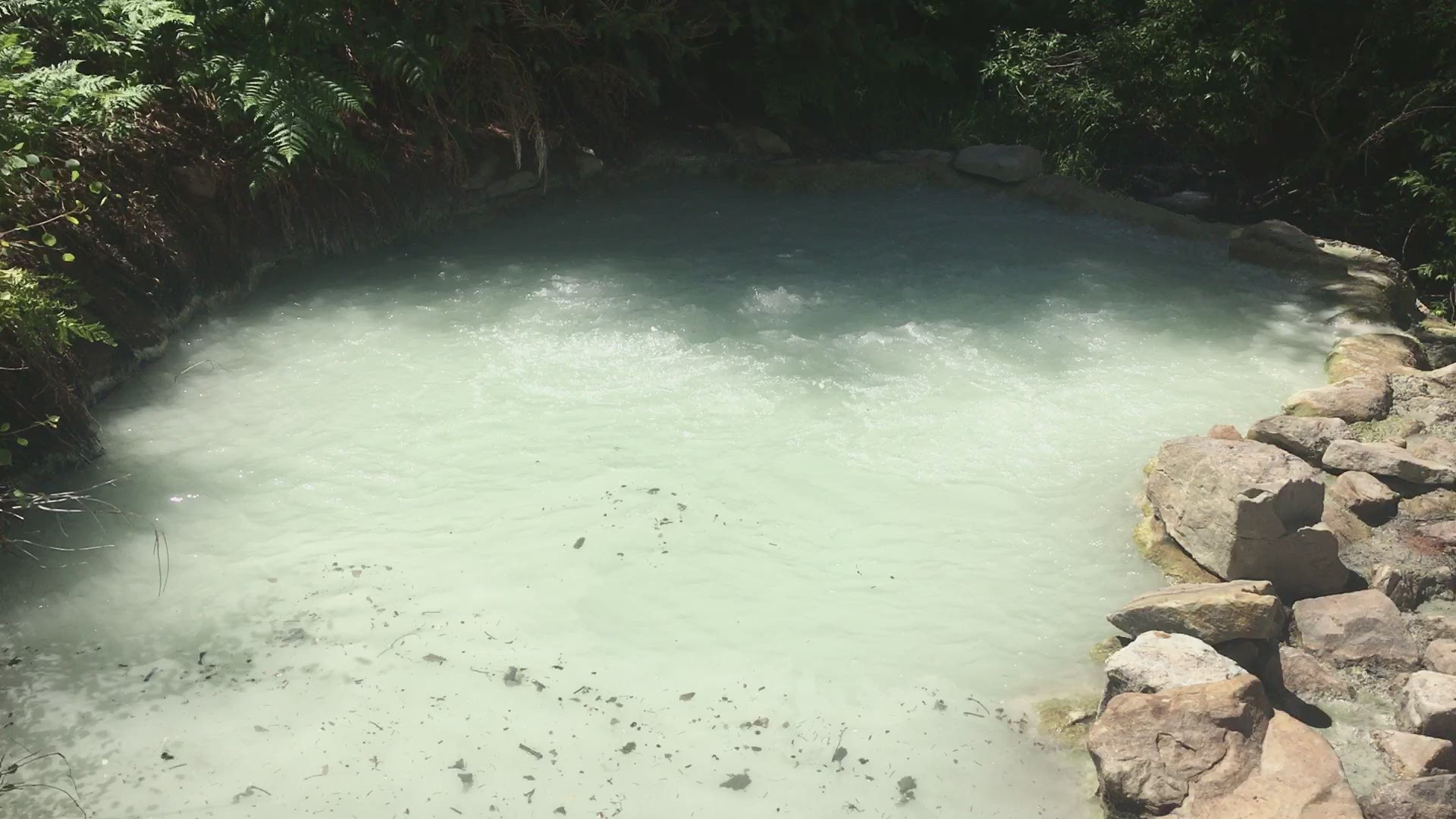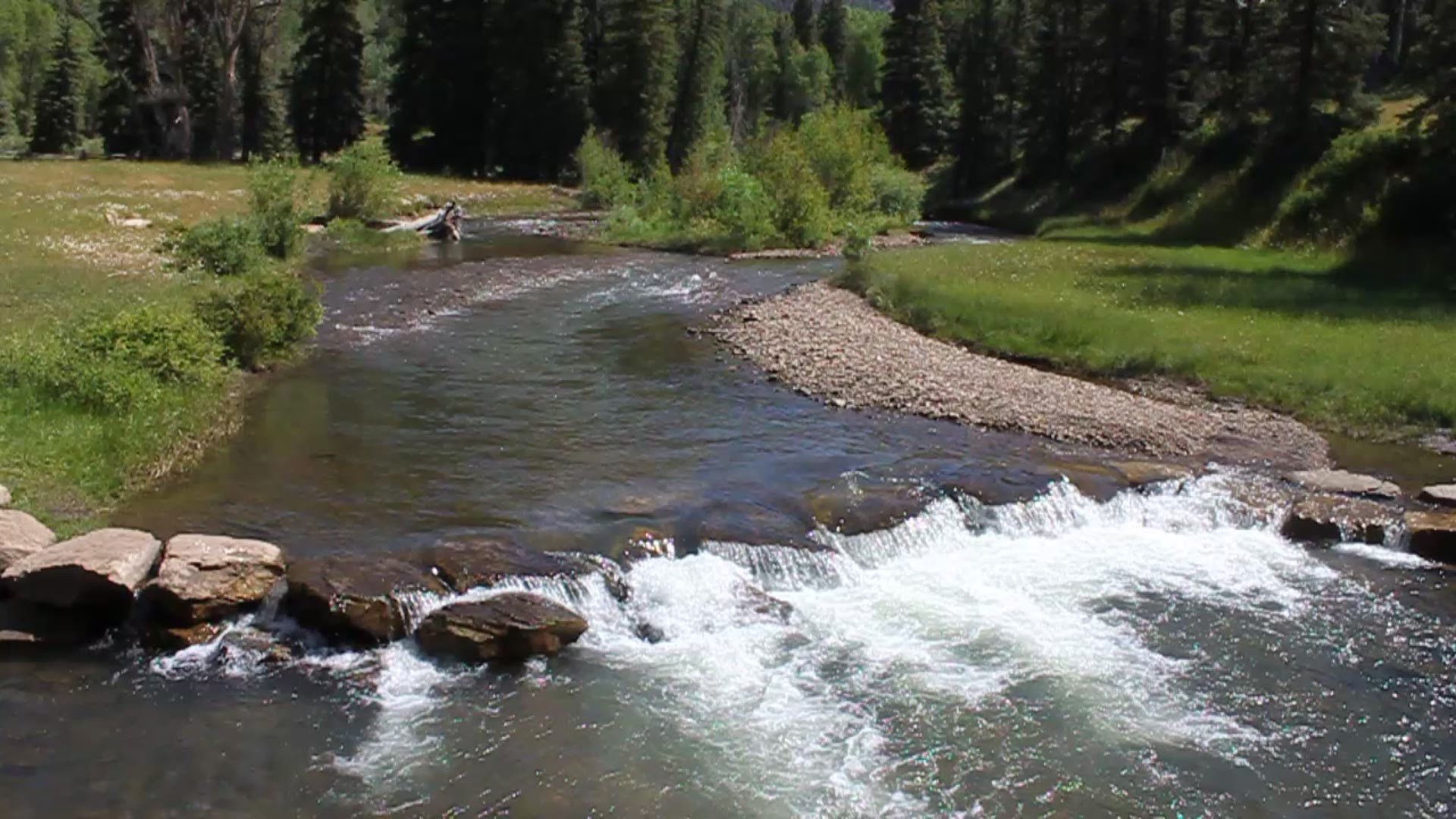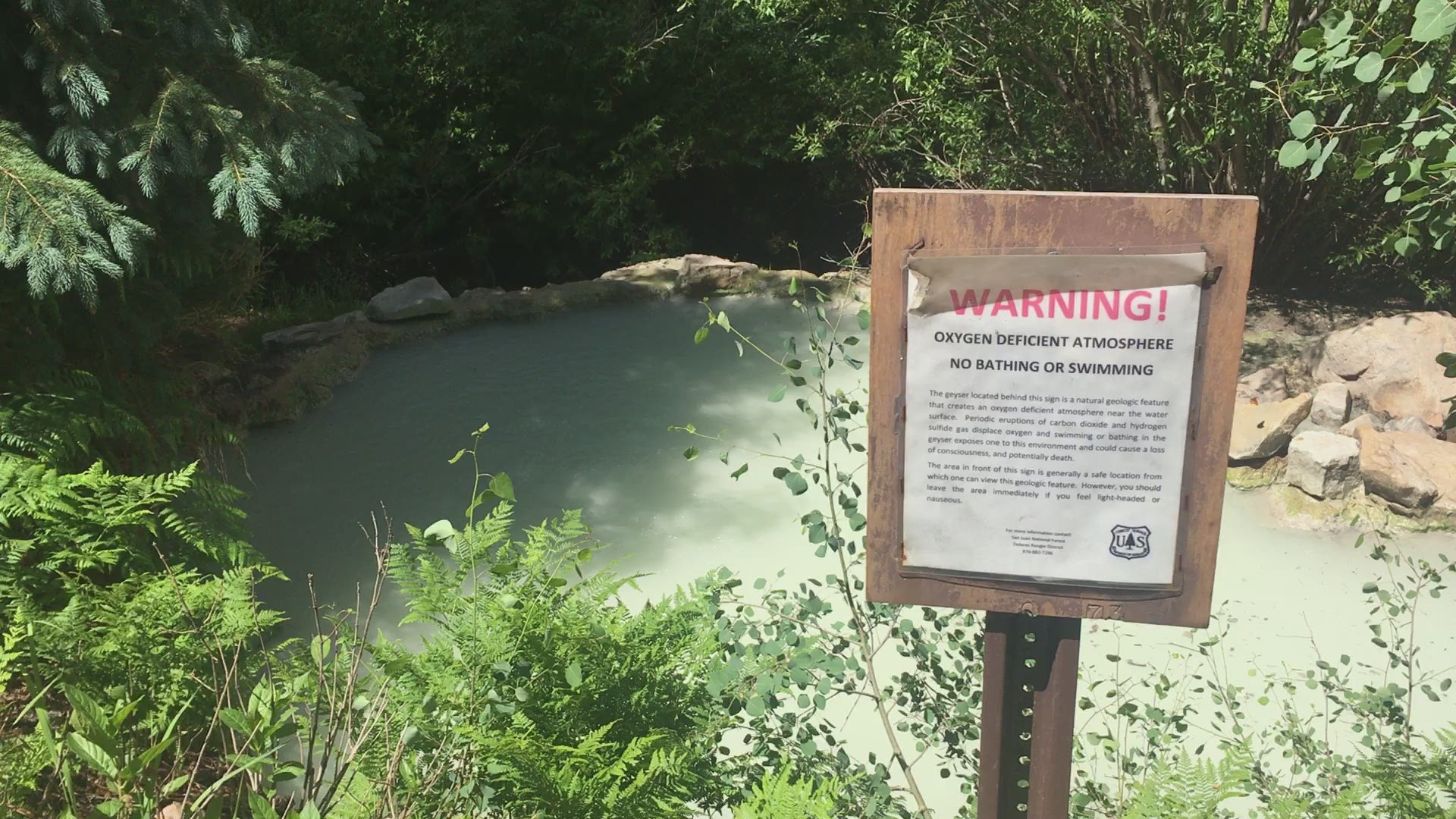DOLORES COUNTY, Colorado — Wyoming has hundreds of geysers at Yellowstone Park, including Old Faithful.
Colorado has only one.
Geyser Spring is located more than a mile off a dirt road near Dolores in southwestern Colorado. The geyser looks like a natural hot tub set up in the middle of the wilderness.
While Old Faithful and Geyser Spring both put on a show about every hour, that is where their similarities end.
Old Faithful has so many tourists, it needs its own visitor center.
Geyser Spring doesn't even have a bench for the few people a day who visit.
Old Faithful sends water 90 feet to 180 feet into the air. Geyser Spring's "eruptions" barely break the surface of the water.
Old Faithful's water shoots out a scalding 204 degrees. Geyser Spring bubbles away at a lukewarm 82 degrees.
Geyser Spring's shape is very circular, and the water bubbles as if there are Jacuzzi jets just below the surface of the very light blue water.

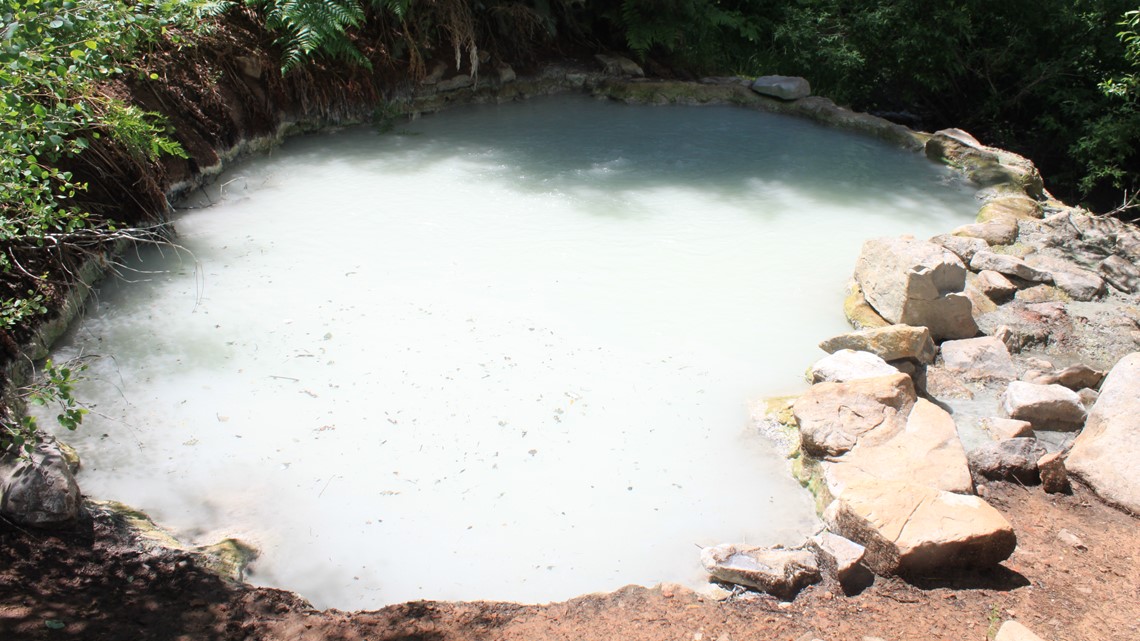
Every 30 minutes to 40 minutes, the pool of water looks like it is boiling from all the bubbles rushing to the surface.
These eruptions, as small as they are, last 10 minutes to 15 minutes, much longer than those at Old Faithful.
The video below shows a 360-degree view of Geyser Spring during an eruption. (Click around the screen to explore the view.)
Getting to the trailhead
Getting there isn't easy, which might explain why few people make the trip to this unique place. The secluded trailhead is located south of Telluride. The "easiest" way to get there is from the town of Dolores, a southwestern Colorado town about 381 miles from Denver.

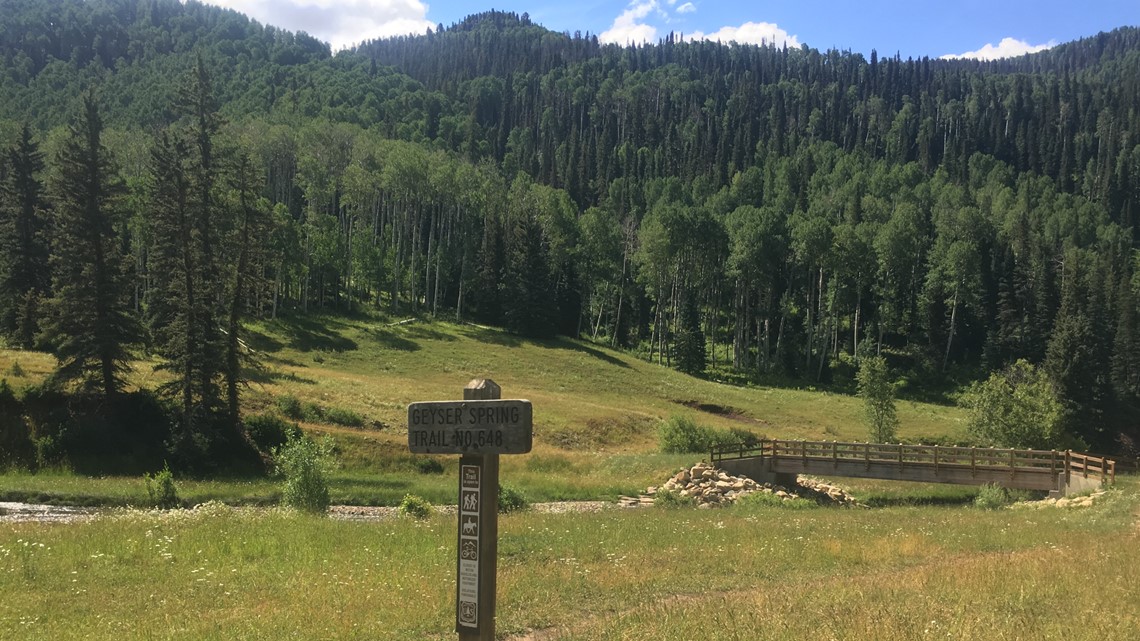
From Dolores, it is a 12 mile drive east on Highway 145. Once you see the area's newest landmark, Memorial Rock, you are getting close to the turnoff.
Memorial Rock is an 8.5 million-pound rock that fell on the highway on Memorial Day. The Colorado Department of Transportation (CDOT) spent nine weeks rebuilding the road around the new landmark.

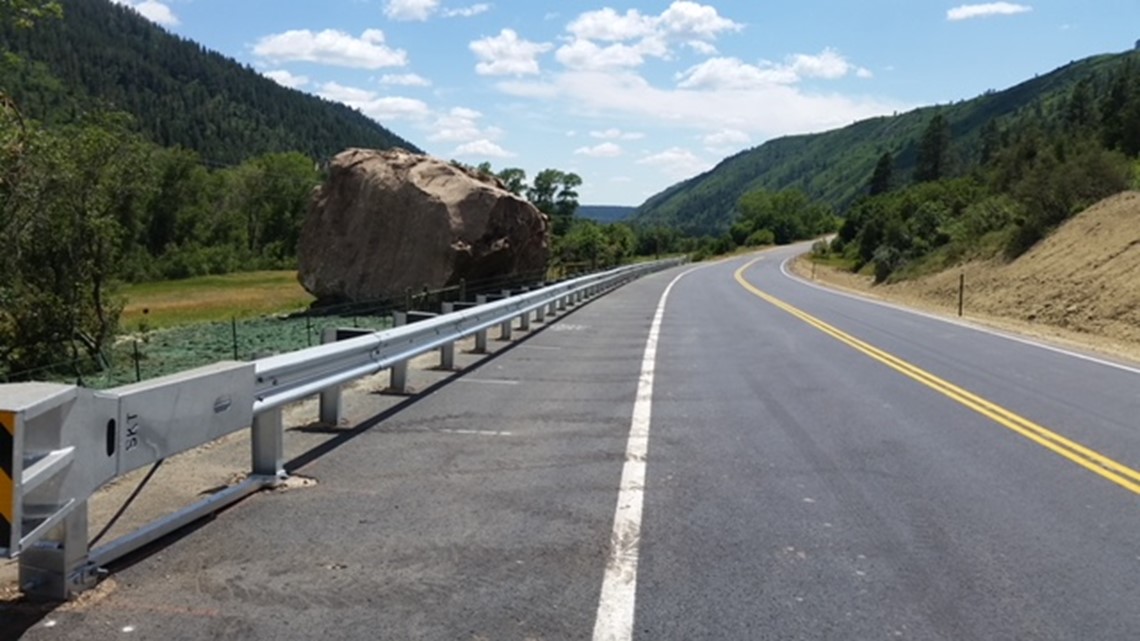
Just a short distance from that spot, a sign points the way to Dunton and to West Dolores Road. (This road has a few other names as well. It is National Forest Service Road #535 and also known as County Road 38.)


The Geyser Spring trailhead is 23 miles from the turn-off. A few of those miles are on a paved road. (The road can get dicey in the wet months, but once snow melts, any vehicle should be able to travel on the road.)

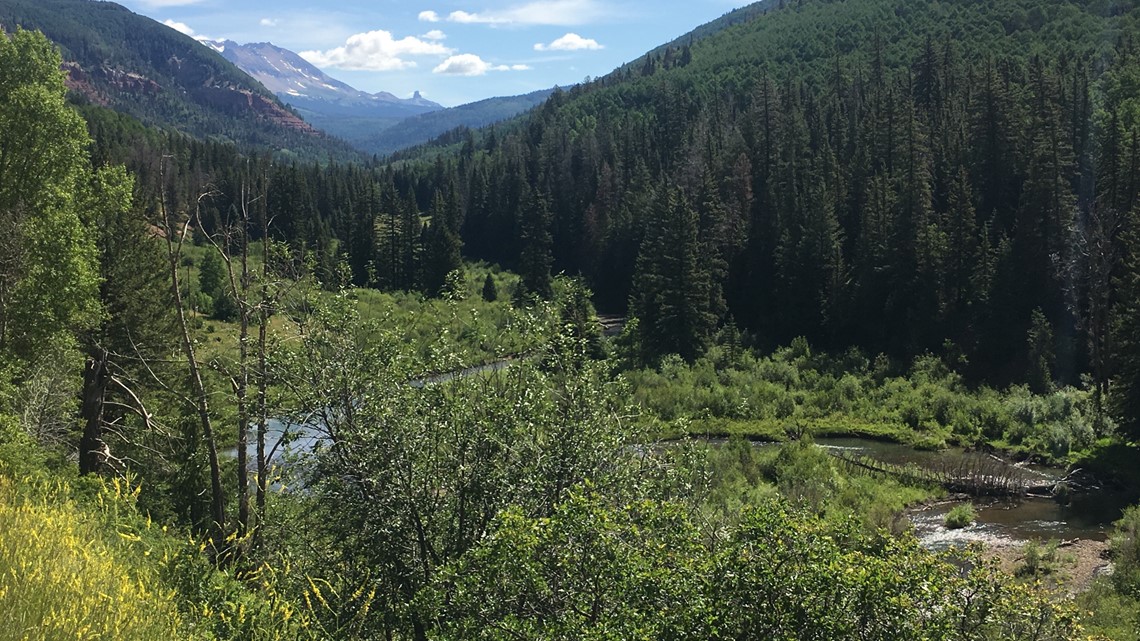
The Geyser Spring trailhead is also just beyond the Dunton River Camp and two miles south of Dunton Hot Springs. Dunton was a ghost town that was renovated in the 1990s and turned into a five-star luxury resort.
A small parking lot is located just off Dolores County Road 38. Few people make this hike on any given day, and on most days, it is rare to see more than one or two cars parked here along the river.
The trail to the geyser
Here are some details about the Geyser Spring trail:
- Trail length: 1.3 miles one way
- Starting elevation: 8,600 feet
- Ending elevation: 9,100 feet
- Hiking level: Moderate to difficult
- Time to go: May through October (depending on snow conditions)
The Geyser Spring trailhead has been rebuilt in recent years, and the bridge just beyond the parking lot offers one of the best spots to get close to the water.

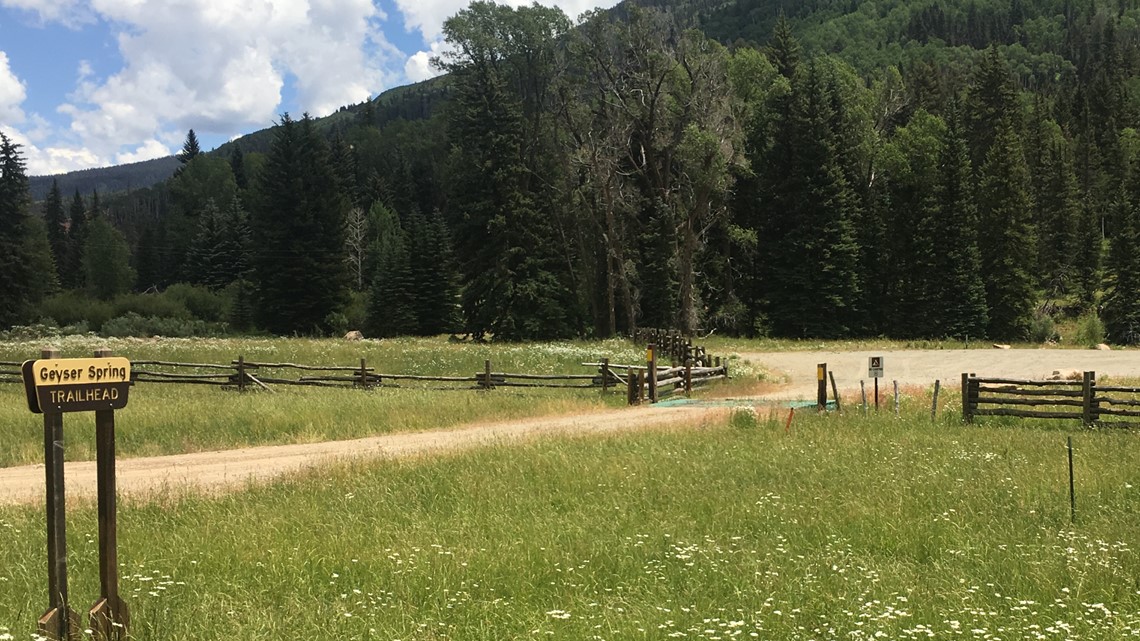
Just beyond the bridge, hikers will catch the scent of sulfur wafting down from somewhere above. The trail itself is narrow, with plenty of wildflowers growing next to it in the summer.

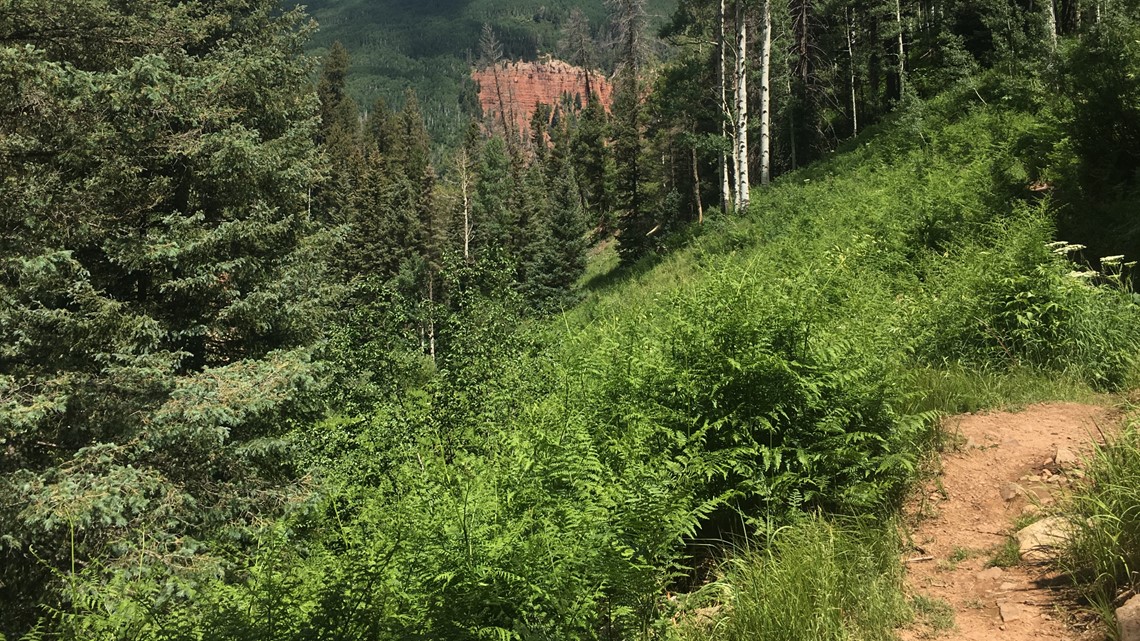
It is a steady uphill climb for most of the trail. Other than the smell of sulfur, there are few signs that indicate the geyser is nearby. The trail will level off and start to go slightly downhill just before a sign that says this is a sensitive area and is foot-travel only.

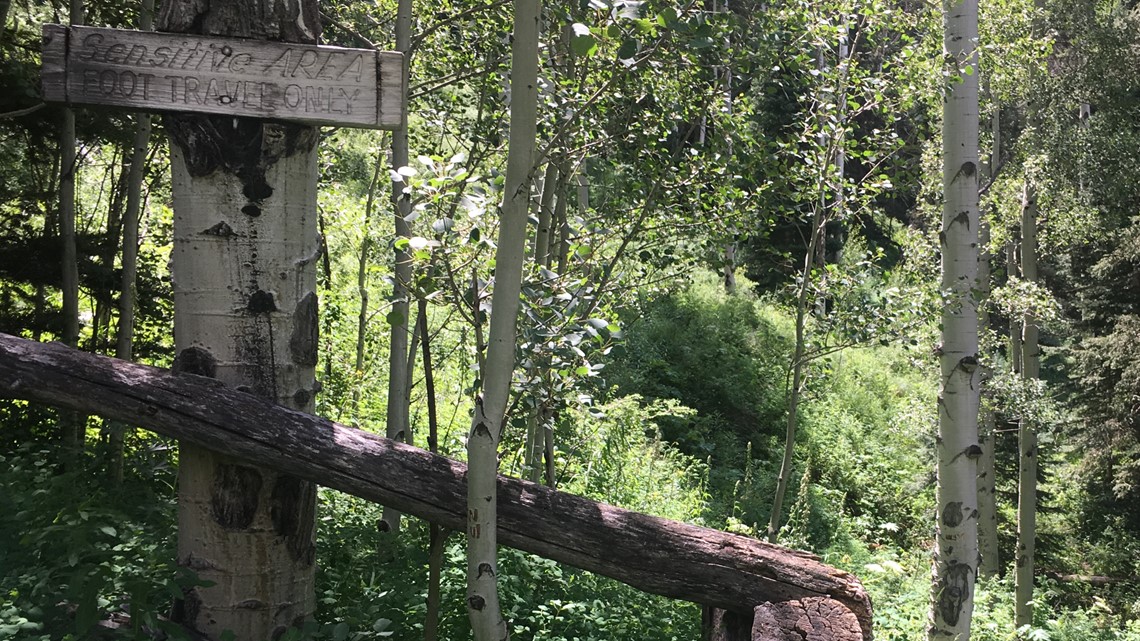
Just a few feet past this sign, the strange light blue water of the geyser comes into view for the first time.

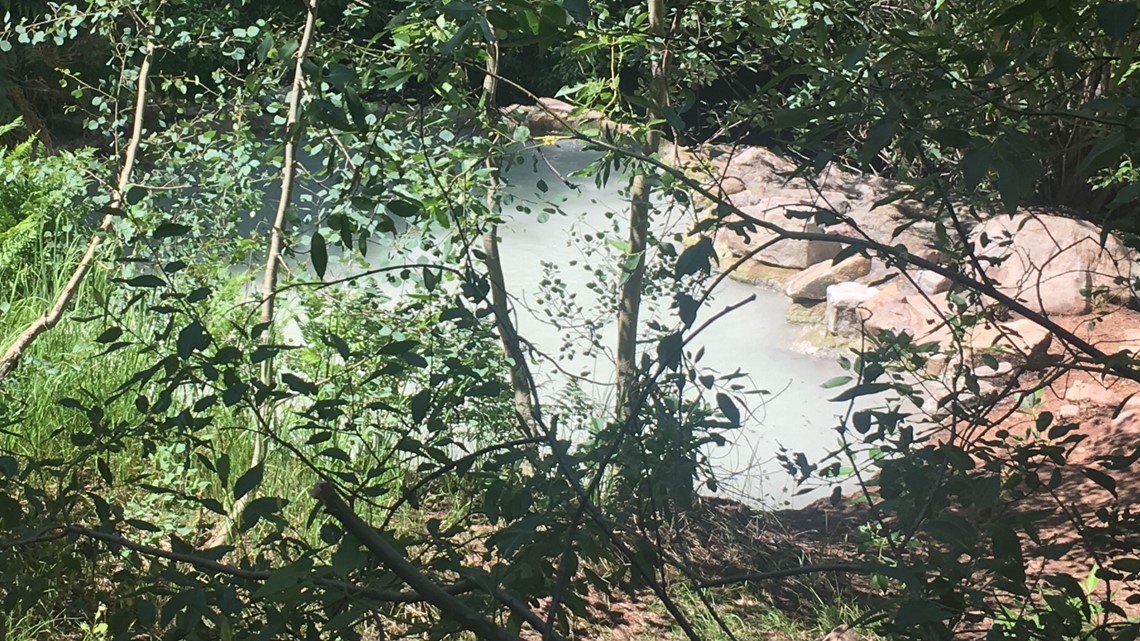
The geyser's warning
Getting a chance to watch this geyser at work is an exciting experience, but it does come with a warning.
A sign posted between the trail and the geyser has this message:
WARNING! Oxygen deficient atmosphere. No bathing or swimming. The geyser located behind this sign is a natural geologic feature that creates an oxygen deficient atmosphere near the water surface. Periodic eruptions of carbon dioxide and hydrogen sulfide gas can displace oxygen and swimming or bathing in the geyser exposes one to this environment and could cause a loss of consciousness, and potential death. the area in front of this sign is generally a safe location from which one can view this geologic feature. However you should leave the area immediately if you feel light-headed or nauseous.
Be aware this was also a mining area more than a century ago. Stay on the trail and stay out of areas where you can see signs of mining activities. Few people are on this trail on any given day. There is also no cell service for miles. Be careful while you enjoy the only geyser in all of Colorado.



